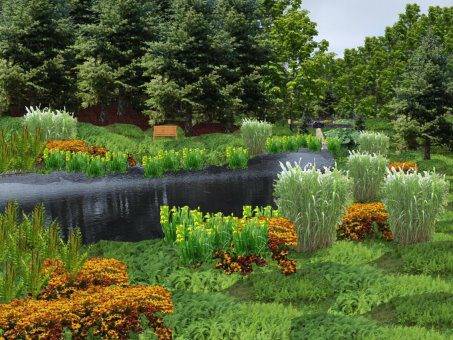Asparagus
Growing Information: Asparagus
CULTURE: Asparagus is a perennial that can thrive for 15 years or more. It likes sun or part shade and a rich soil limed to a pH of 7.0 or higher. Plants that are not fully dormant during warm southern winters may be injured or killed by frost; may not perform well in TX, MS, GA, LA, AL, or FL.
GROWING FROM SEEDS: Sow seeds indoors 12-14 weeks before transplanting 1 seed per 2″ cell or pot, 3/4″ deep. Germinate at 75-80F (23-27C) day, 65F (18C) night. Fertilize seedlings moderately when needed and wash fertilizer off foliage. Control aphids and thrips with pyrethrin. After frost danger, plant seedlings similarly to crowns, but use a W shaped trench – plant the seedling into the 1-2″ high middle point in the W – to keep the roots out of water in case of heavy rain.
PLANTING CROWNS: Plant the crowns 8″ apart for slender spears, 14″ apart for thick spears, in furrows 6-8″ deep and 3-5′ apart. Plant in early to mid-spring. Lay the roots flat in the trench and cover with 1-2″ of soil. Fertilize with a high-phosphate starter fertilizer or abundant compost. To fill trench, add soil 3 times during the first few weeks, ending with a slight mound to prevent puddles. Keep free of weeds and irrigate. Heavy hay, straw, or leaf mulch may be applied in mid-summer. The “ferns” that grow feed the roots; don’t cut them back until they senesce (die naturally) in the fall. Apply additional compost or aged manure each fall or early spring.
HARVEST: The new bed will be ready for moderate harvest a year after planting, and full harvest every mid-late spring thereafter for many years. During hot weather (86F (30C)), harvest daily to maintain crop quality. Bend spear until it snaps, or cut 1″ below the soil.
STORAGE: Store at 32F (0C) for 2-3 weeks.
DELIVERY OF CROWNS: Asparagus crown orders ship late March through late April depending on location. Call for dates for your area.
DELIVERY OF SEEDS: Year-round.
SEED SPECS: SEEDS/LB.: 13,000-16,000 (avg. 15,000), 1 oz.: (28 gm.) avg. 935 seeds.
PACKET: 1 gm. (avg. 30 seeds).
THE BENEFITS OF ASPARAGUS: One of the earliest vegetable crops. Set out plants or roots as early in the year as they’re available. Wait two years for the first harvest. The tasty spears of this hardy perennial push up from heavy root masses from early spring until warm weather arrives and occasionally through midsummer. (Asparagus needs a winter dormancy period to thrive.) Mature asparagus plants look completely unlike the spears; they reach from 4 to 6 feet in height and billow out to a width of 3 feet. These feathery, decorative plumes should be left on the plant until they have begun to dry in late autumn; they manufacture the food reserves that maintain strong crowns from year to year. Cut the stems to the ground only after the foliage turns brown. Although asparagus takes several years to come into full production, the plants are very long lived-up to 20 years or more.
Two dozen plants should yield enough spears for a small family. How to plant. Since three years are required to produce spears from seed-grown plants, most gardeners prefer to start from roots. Roots are available during the late winter in Western states and can be planted as early as they are available. In other areas, mail order is the usual source. Plant the roots as soon as you receive them. Asparagus plants need lots of room and full sun. Plant them at the back of the garden or along a fence where the tall foliage won’t be in the way. Because the plants will be in place for many years, the soil should be broken up to a depth of 18 inches and large volumes of organic matter, such as well-rotted manure, should be worked in thoroughly. Don’t skimp on the width of the bed; the prepared soil should extend 18 inches beyond the crowns. Mixing in organic matter should raise the bed 2 to 3 inches above the surrounding soil; this improves drainage. For each crown, dig a hole 5 to 8 inches deep in the prepared bed and fill it with water. Pile a cone of loose soil 3 to 4 inches high in the center of the hole. Set the crown in the hole and spread out the fleshy roots. Fill the hole with soil and firm it down lightly around the roots. Water the crown again. Care. Cultivate only in the top inch of the soil so you don’t injure the network of roots.
Pull weeds by hand before they get started in the bed, where they will be difficult to pull out without injuring the asparagus roots. Perforated sprinkler hoses provide an excellent device for the deep watering needed by asparagus, since beds are too wide for basins or furrows. Let the sprinkler run for several hours every week or two during dry weather. Feed with a complete fertilizer high in nitrogen when plants put on a growth spurt-usually around midsummer. When you remove the brown foliage in the fall, add a mulch of 2 to 3 inches of coarse organic matter, such as well-rotted manure. Do not use peat moss or leaves as a mulch; they form a crust or pack down, preventing moisture from penetrating the bed and hindering emerging spears. Pests. The organic mulch over the beds makes a good hiding place for snails, slugs, sowbugs, and earwigs. Here is a list of some of the health benefits of asparagus.
Asparagus: Can detoxify our system Has anti-aging functions Is considered an aphrodisiac Can protect against cancer Reduces pain and inflammation Can prevent osteoporosis and osteoarthritis Reduces the risk of heart disease Can help prevent birth defects.

Recent Comments